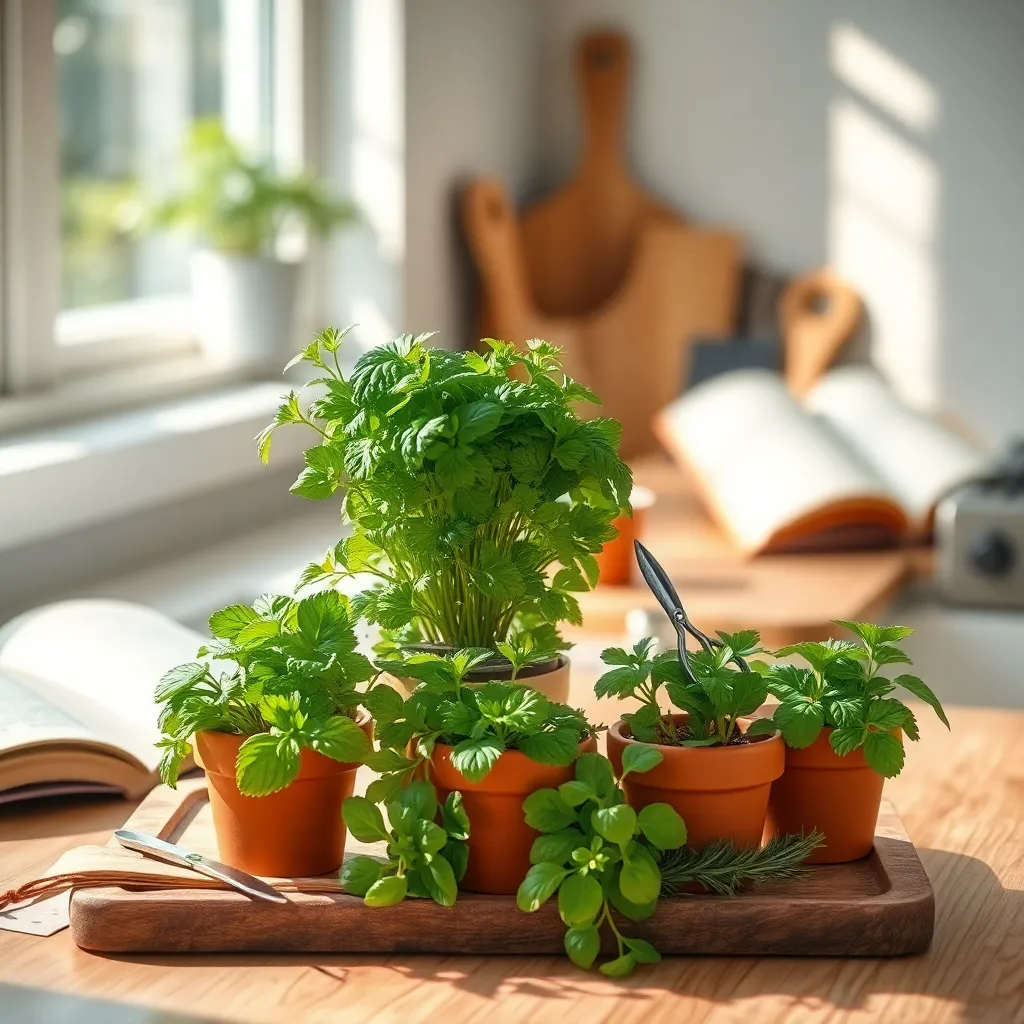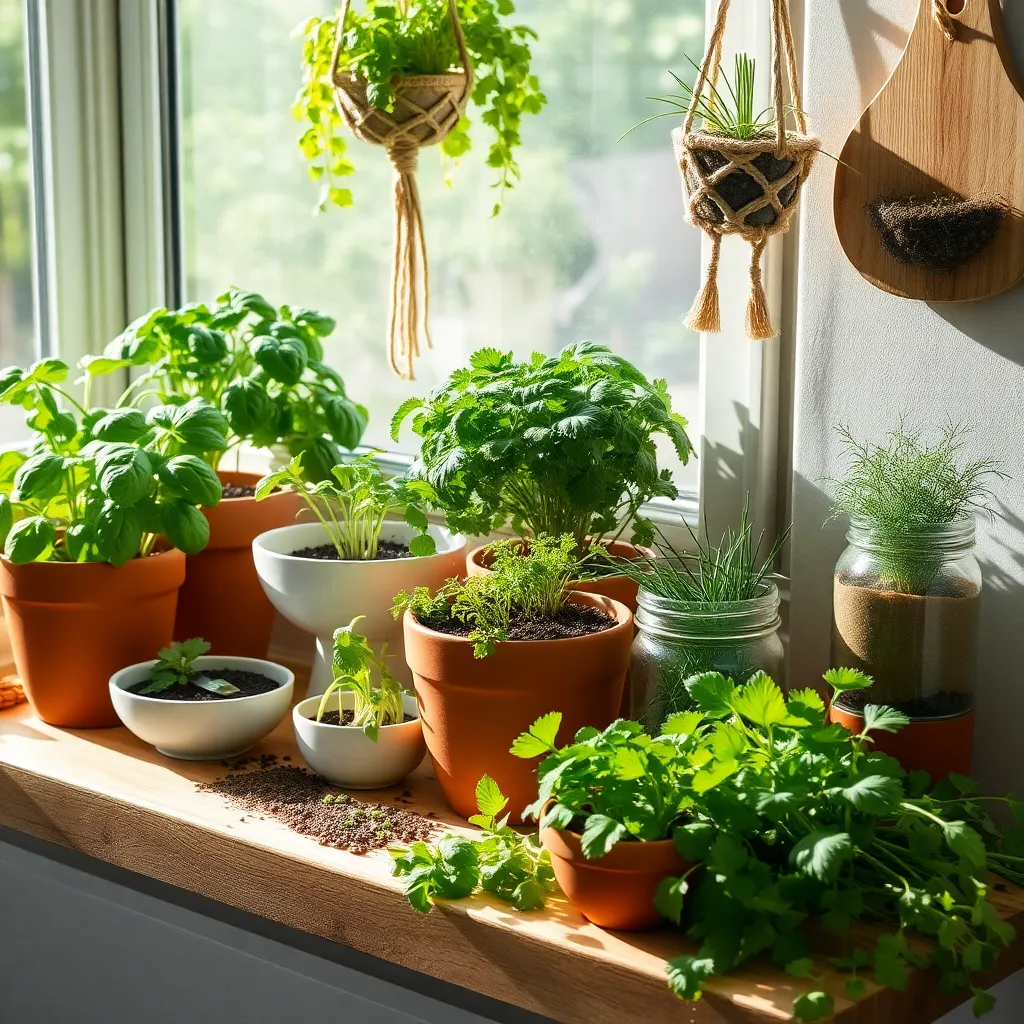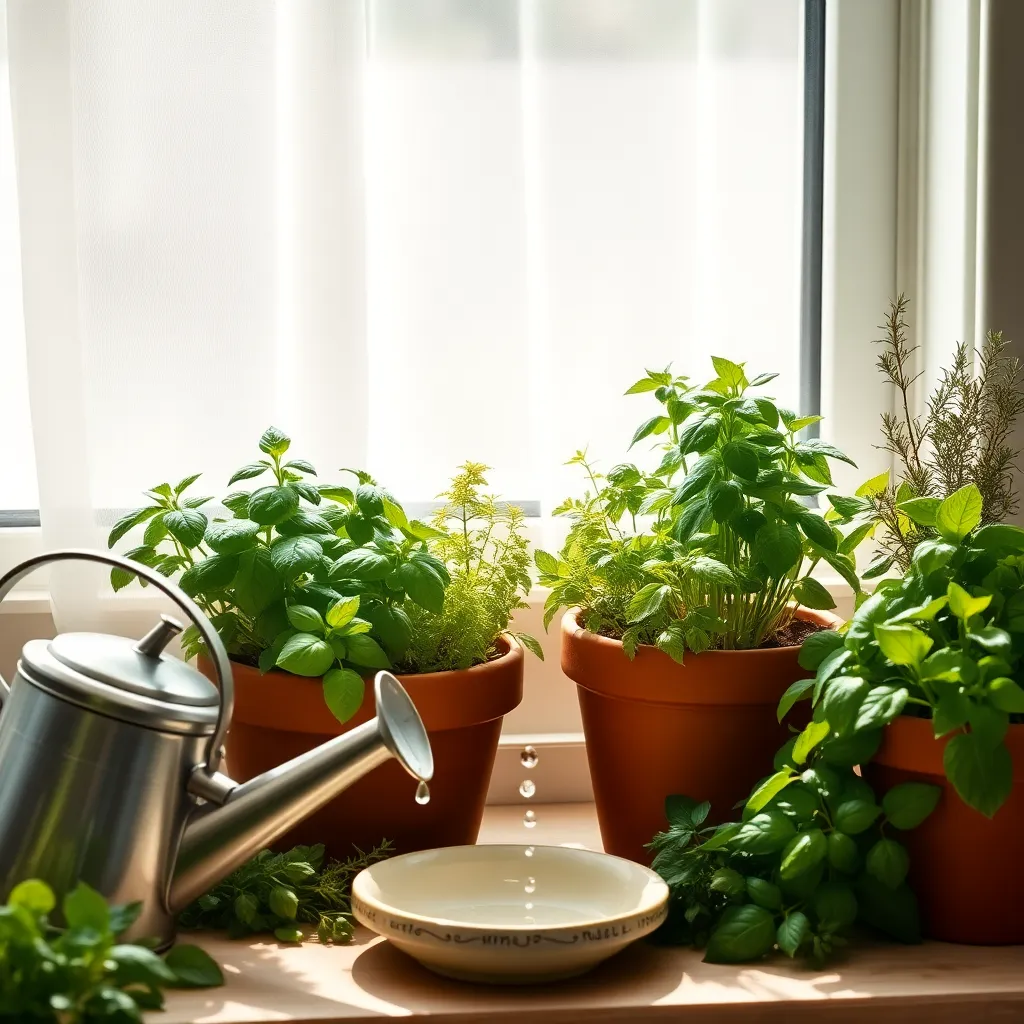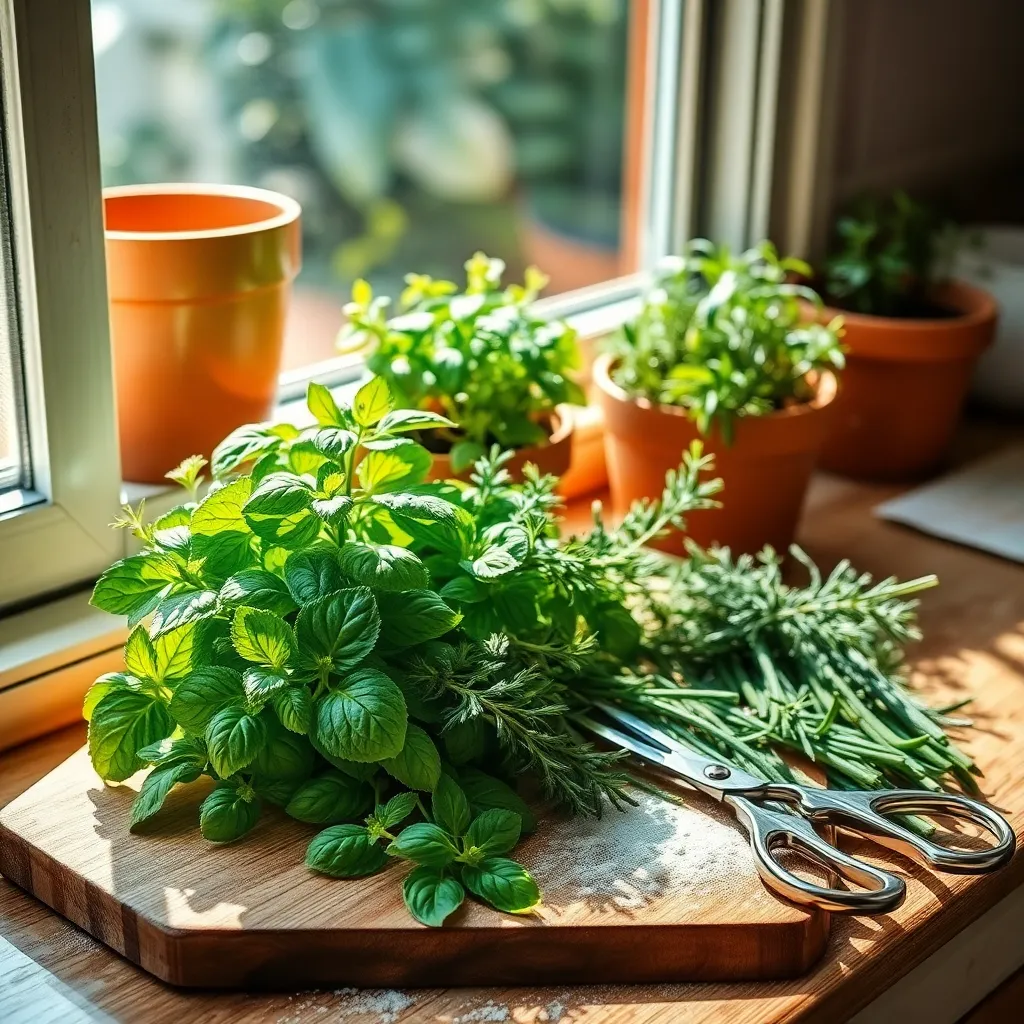Imagine stepping into your kitchen and being greeted by the fresh, invigorating scents of basil, mint, and rosemary, all thriving just a few steps away from your stovetop. Starting a herb garden in your kitchen is not only a delightful way to enhance your culinary creations, but it also brings a touch of nature indoors, even if you don’t have a sprawling backyard. Whether you’re just beginning your gardening journey or have years of green-thumb experience, cultivating herbs indoors offers a unique blend of practicality and pleasure that can transform your cooking and living space.
For those new to gardening, embarking on this aromatic adventure can seem daunting, but rest assured, it’s far more accessible than you might think. Experienced gardeners will find this endeavor a rewarding way to expand their skills and enjoy fresh flavors all year round. In this article, you’ll discover essential tips on selecting the right herbs, creating ideal growing conditions, and maintaining your mini garden to ensure it flourishes. By the end, you’ll be equipped with the knowledge to nurture a thriving herb garden that will enrich your meals and bring a sense of satisfaction and serenity to your home.
Select Ideal Indoor Herb Varieties

When selecting herbs for your indoor kitchen garden, consider starting with easy-to-grow varieties like basil, parsley, and mint. These herbs thrive in indoor conditions and are perfect for beginners, as they require minimal care.
Each herb has unique needs, so it’s vital to tailor your care approach accordingly. For instance, basil thrives in bright sunlight and should be placed on a sunny windowsill, while mint prefers slightly less intense light.
To ensure your herbs flourish, use a well-draining potting mix to prevent root rot. A mix designed for indoor plants often contains perlite or vermiculite, which helps improve drainage.
Watering frequency varies depending on your indoor climate and the specific herb. A general rule of thumb is to water when the top inch of soil feels dry to the touch, ensuring that the pot has adequate drainage to avoid waterlogging.
For those ready to experiment with more challenging herbs, consider rosemary or thyme, which require more precise conditions. These herbs need less frequent watering and benefit from occasional misting to maintain humidity without saturating the soil.
Advanced gardeners might explore the use of grow lights to supplement natural light, particularly during the winter months. This ensures that your herbs receive the necessary light spectrum to support robust growth and flavor development.
Find a Sunny Kitchen Spot

Finding the right spot in your kitchen for a herb garden is essential for healthy plant growth. Look for a location that receives at least six hours of direct sunlight per day, such as a south or west-facing window.
Natural light is crucial for herbs like basil, oregano, and rosemary to thrive. If your kitchen lacks sufficient sunlight, consider supplementing with full-spectrum grow lights to ensure your herbs get the light they need.
Position your herb pots close to the window, but keep them away from drafts that can stress the plants. It’s important to regularly rotate your pots so that all sides of the plants receive equal sunlight, which prevents leaning and encourages even growth.
For beginners, using a windowsill herb planter can be a great way to maximize space and sunlight exposure. More experienced gardeners might explore vertical growing systems, which can allow for more variety and efficient use of kitchen space.
Plant in Suitable Containers

Choosing the right containers is crucial for the success of your kitchen herb garden. Make sure to select pots that have good drainage holes to prevent waterlogging, which can harm the roots.
Opt for containers that are at least six inches deep to give your herbs ample space to grow. This depth is particularly important for herbs like basil and mint, which have more extensive root systems.
For a touch of creativity, consider using recycled items like old teapots or jars as containers. Just ensure these items are clean and have proper drainage, either by drilling holes or adding a layer of gravel at the bottom.
When it comes to soil, use a lightweight potting mix that retains moisture without becoming soggy. Adding a bit of perlite or sand can improve drainage and keep your herbs healthy.
Ensure Consistent Watering Routine

Establishing a consistent watering routine is crucial for the success of your kitchen herb garden. Most herbs prefer soil that is kept consistently moist, but not waterlogged, which can lead to root rot.
Begin by checking the soil moisture with your fingertip; if the top inch of soil feels dry, it’s time to water. A good rule of thumb is to water your herbs about once or twice a week, adjusting based on the specific needs of each plant and the humidity in your kitchen.
For herbs like basil and mint, which thrive in slightly wetter conditions, consider placing a saucer under the pot to catch excess water and allow the plant to absorb it as needed. Conversely, Mediterranean herbs such as rosemary and thyme prefer drier conditions, so they should be watered less frequently.
To ensure even watering, consider using a watering can with a narrow spout to target the base of each plant, minimizing water on the foliage. This helps prevent fungal diseases that can occur when leaves remain wet for extended periods.
- Tip for Beginners: Use a moisture meter for precise readings if you’re unsure about soil moisture levels.
- Advanced Tip: Group herbs with similar watering needs together to streamline your routine and maintain plant health.
Harvest Herbs Regularly for Use

To keep your herb garden thriving and productive, it’s essential to harvest herbs regularly. Regular harvesting encourages new growth and prevents your plants from becoming leggy and overgrown.
When harvesting, aim to snip herbs in the morning when their essential oils are most concentrated. Use sharp scissors or pruning shears to make clean cuts just above a leaf node to promote further growth.
It’s vital to understand the unique needs of each herb to ensure optimal growth and flavor. For example, basil thrives when you pinch back the top leaves regularly, while rosemary benefits from less frequent, more substantial cuts.
Consider implementing a rotating harvest schedule to manage your herb garden efficiently. This approach allows you to harvest different herb varieties each week, ensuring a constant supply of fresh greens for your kitchen.
For those looking to expand their gardening skills, try propagating herbs from cuttings to increase your plant stock. Many herbs, such as mint and oregano, root easily in water or damp soil, providing a cost-effective way to grow your collection.
- Pinch basil tops weekly to encourage bushier growth.
- Trim mint and oregano every two weeks to prevent them from becoming invasive.
- Snip chives about an inch from the soil to promote fresh growth.
By integrating these techniques into your routine, you’ll not only enhance your garden’s productivity but also enjoy a continuous supply of fresh, aromatic herbs. Remember, a well-maintained herb garden is both a visual delight and a culinary treasure.
Conclusion: Growing Success with These Plants
As you embark on the journey of nurturing your kitchen herb garden, remember the five key relationship concepts we’ve explored: cultivating patience, fostering communication, embracing growth, nurturing commitment, and celebrating shared goals. Just as plants need care and attention, so do our relationships. By applying these principles, you not only enhance your green thumb but also enrich your connections with loved ones.
Your next step? Choose one herb to plant today, and as you tend to it, reflect on how you can apply the same care to your relationships. Whether it’s a rosemary sprig symbolizing remembrance or basil for love, let each leaf remind you of the bonds you’re nurturing.
Don’t let this valuable information slip away—bookmark this article now for future reference. Let it serve as a gentle reminder of the parallels between gardening and relationships, guiding you toward flourishing connections.
By embracing these principles, you’re not just growing herbs; you’re cultivating a future of relationship success. Remember, every small action today can lead to a thriving, harmonious tomorrow. Keep this article close, and let it inspire your journey toward deeper, more fulfilling relationships.
